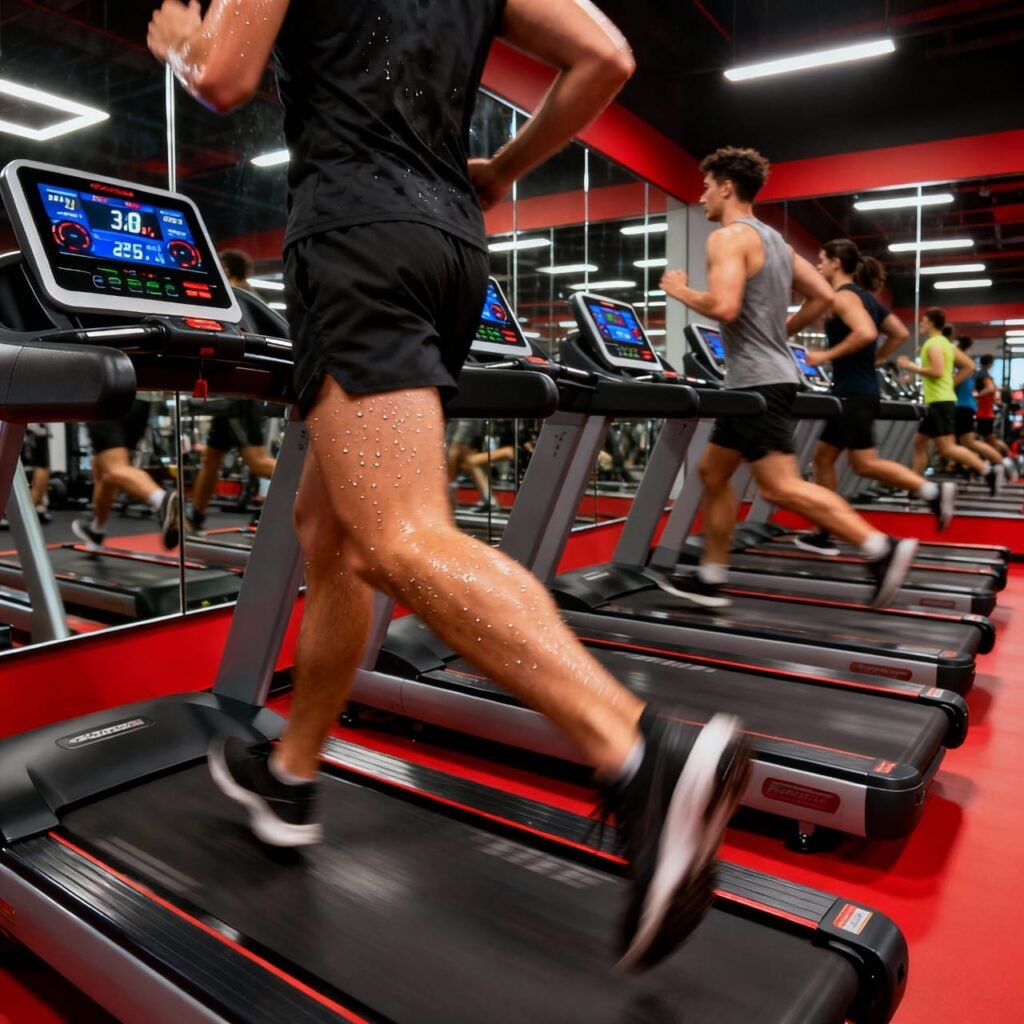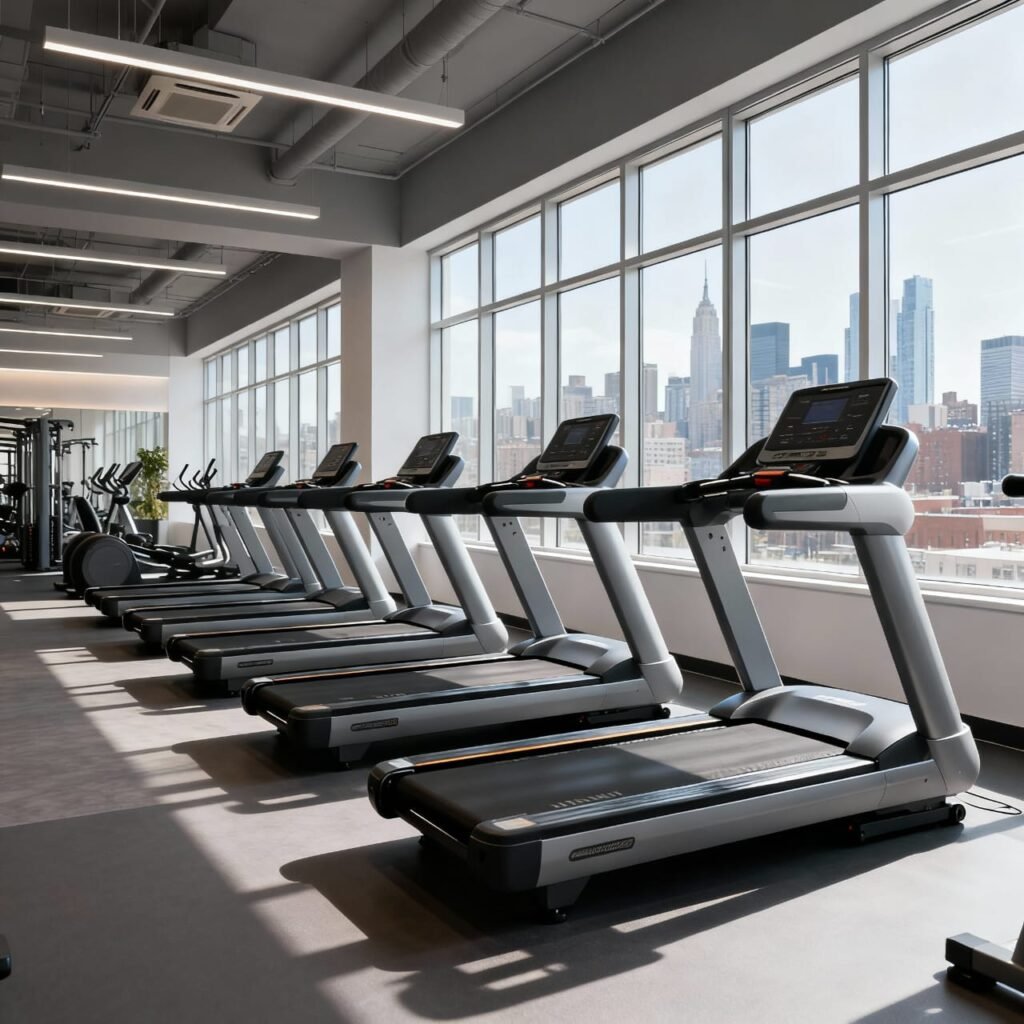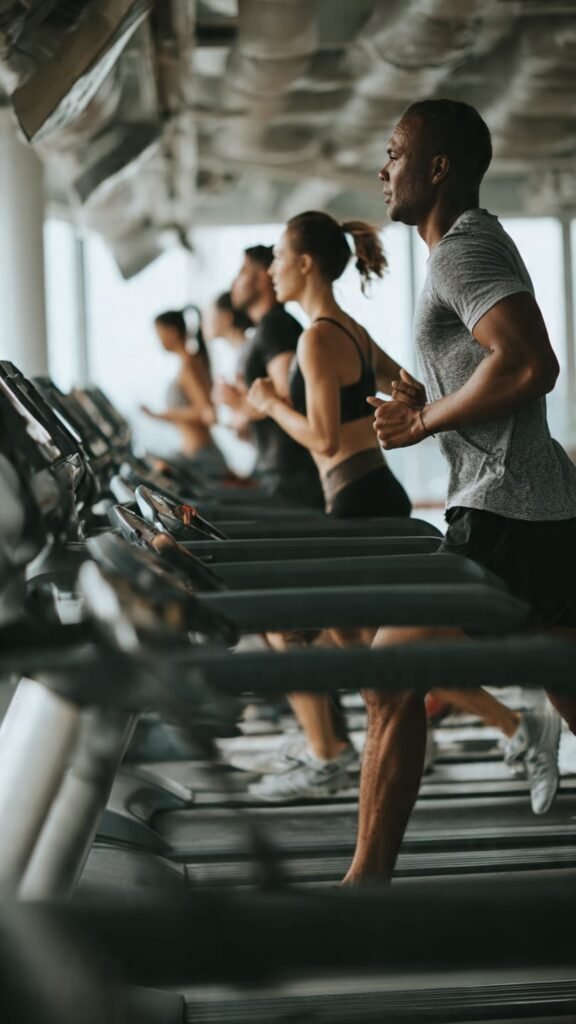- Factors to Consider When Buying the Best Commercial Treadmill
- Maintenance and longevity of commercial treadmill uniits
- Commercial Treadmill buying guide – Final word
Treadmills are among the most heavily used machines in gyms and fitness clubs. Cardio enthusiasts rely on them for extended sessions, while strength-focused members may use them for short sprints or active recovery walks. These Commercial Treadmill units often run for hours each day, supporting users of varying body weights, stride patterns, and fitness goals.
Given this demanding usage, gym owners must be strategic when selecting treadmills for their facility. A breakdown not only disrupts member routines; it can damage your brand’s reputation and trust. This guide walks through the key factors to consider before investing in a commercial treadmill.

Factors to Consider When Buying the Best Commercial Treadmill
From motor power to structural integrity and upkeep demands, here’s what gym owners must assess before investing in a commercial treadmill.
1. Robust Construction
Structural Integrity: Commercial treadmills must be engineered to withstand continuous use across a wide range of body weights and movement styles. Look for frames that resist flexing, wobbling, or premature wear. For high-traffic gyms, a maximum user weight capacity of 180-220 kg (approximately 400–485 lbs) is ideal.
Quality Materials: Prioritize treadmills built with high-grade steel or reinforced alloys. These materials offer superior durability, load-bearing strength, and long-term resilience, even under intense daily usage.
Higher Weight Capacities: Commercial treadmills should safely accommodate a wide range of body types. Look for models with weight capacities between 180–220 kg (approximately 400–485 lbs). This ensures inclusivity, structural integrity, and peace of mind for gym owners serving diverse clientele.
2. Sturdy Frame and Design
Heavy-Duty Steel Frame: For commercial use, the treadmill frame must be constructed from high-tensile steel or equivalent heavy-duty materials. This ensures reliable support for users with higher body weights and minimizes structural fatigue over time.
Frame Stability: A stable frame prevents lateral sway, vibration, and noise during use, especially during sprints or incline workouts. Stability enhances both user safety and comfort, contributing to a premium gym experience.
3. High-Quality Components
Powerful Motor: The motor is the heart of any treadmill. For commercial use, choose models with continuous duty motors rated at 6.0 HP or higher. This ensures smooth performance during long hours of operation and supports both walking and high-speed running – without overheating or stalling. Advanced motors also offer quieter operation, ideal for shared workout spaces.
AC vs. DC Motors: AC motors are preferred for commercial treadmills due to their ability to run continuously for extended periods. They’re more durable under heavy usage but tend to be more expensive. DC motors, while offering better torque, are typically found in lighter-use models. If you are opting for DC, choose brushless DC motors -they’re more advanced and energy-efficient. DC motors also offer easier repair and servicing, which can reduce downtime after a breakdown. Choose based on your facility’s usage patterns and maintenance capacity.
Durable Running Belt: opt for multi-layered belts with low-friction surfaces and shock-absorbing properties. These reduce wear, minimize maintenance, and enhance user comfort, especially for midlife runners, heavier users, and those recovering from injury.
Shock Absorption and Cushioning: Modern commercial treadmills often feature deck cushioning systems that absorb impact and reduce strain on the ankles, knees, and hips. Look for models with variable cushioning zones or orthopedic decks for enhanced joint protection.
Reversible Running Belts (optional): Advanced models feature reversible belts that distribute wear evenly across both sides. This innovation extends belt lifespan, reduces maintenance costs, and ensures smoother performance over time.

4. Design and Engineering
Innovative Design: The best commercial treadmills integrate cutting-edge technologies that enhance both functionality and longevity. Prioritize ergonomic designs that support natural gait cycles, reduce joint strain, and accommodate midlife users with varying stride lengths and mobility needs.
Engineering Excellence: Choose gym treadmills that are engineered for high-performance durability. Look for models with ISO certifications, safety compliance marks, and third-party reviews that validate build quality, motor efficiency, and long-term reliability.
5. Warranty and After-Sales Support
Comprehensive Warranty: Choose manufacturers that offer full coverage on high-wear components – including the motor, belt, deck, and electronics. A robust warranty reflects confidence in product quality and reduces long-term maintenance costs.
Reliable After-Sales Support: Prioritize brands with responsive service teams, clear escalation protocols, and extended support timelines. Free installation assistance, routine servicing, and easy access to replacement parts can make a major difference in uptime and member satisfaction.
6. Customizable Settings and User Profiles
Personalized Programming: Choose commercial treadmills with customizable speed, incline, and workout modes to accommodate diverse fitness levels. These features empower users to tailor their sessions based on goals, comfort, and recovery needs.
User Profiles and Data Tracking (optional): Models with multi-user profiles allow members to save preferences, track progress, and revisit past workouts. This enhances engagement, especially for midlife users who value consistency, joint-friendly pacing, and visible results.
7. Reputable Commercial Treadmill Brands and Reliability
Brand Reputation: Always research the manufacturer’s track record before investing. Look for brands with a proven history in commercial fitness equipment, high user satisfaction, and consistent performance across multiple facility types.
User Reviews and Peer Insights: Read verified reviews on trusted platforms and speak with other gym owners or facility managers who’ve used the brand long-term. Their firsthand experience can reveal insights about durability, service quality, and real-world reliability.
Final Tip: Align with Your Facility’s Needs
Every gym has its own audience, usage patterns, and brand expectations. Whether you’re outfitting a boutique studio or a high-volume fitness club, choose treadmills that match your members’ goals and your facility’s operational demands.

Maintenance and longevity of commercial treadmill uniits
Regular Cleaning and Lubrication: To ensure consistent performance, commercial treadmills require routine cleaning and targeted lubrication – especially beneath the deck belt, where sweat and dust buildup are most common. Follow the manufacturer’s maintenance schedule and use only approved lubricants to protect the belt, deck, and motor. Frequent checks help identify wear early, preventing costly repairs and minimizing downtime.
Routine Inspections: Beyond basic upkeep, conduct regular inspections of critical parts, especially the motor, console, and frame. Early detection of wear or damage allows for timely intervention before safety or performance is compromised. Always refer to the manufacturer’s manual for inspection intervals and service protocols.
Commercial Treadmill buying guide – Final word
A high-quality commercial treadmill must combine robust construction, powerful motors, durable components, and advanced technology to meet the demands of modern fitness facilities. To ensure long-term performance, routine inspections and proactive maintenance are non-negotiable.
By choosing reputable brands and following manufacturer guidelines, you create a fitness environment that’s safe, reliable, and empowering for every user, every day.
You may also be interested in reading: How to Choose the Right Home Treadmill for Fitness Goals.
Nicely done.
Nicely received 😄 Thanks for the kind words! Hope it helps gym owners make confident and informed choices.